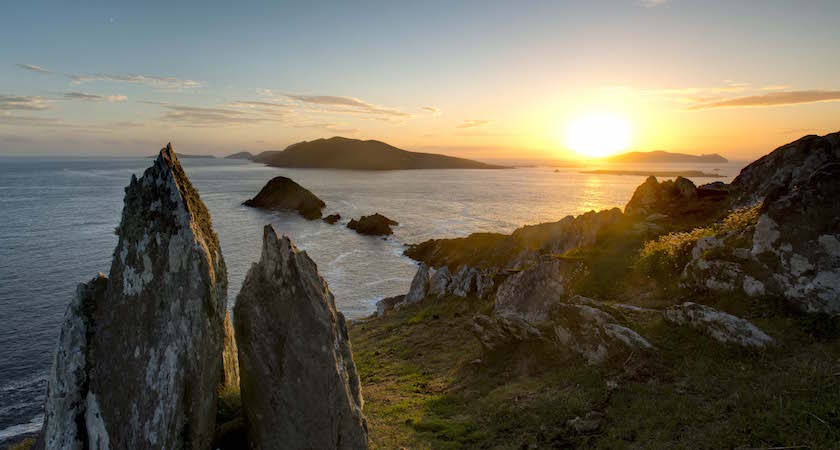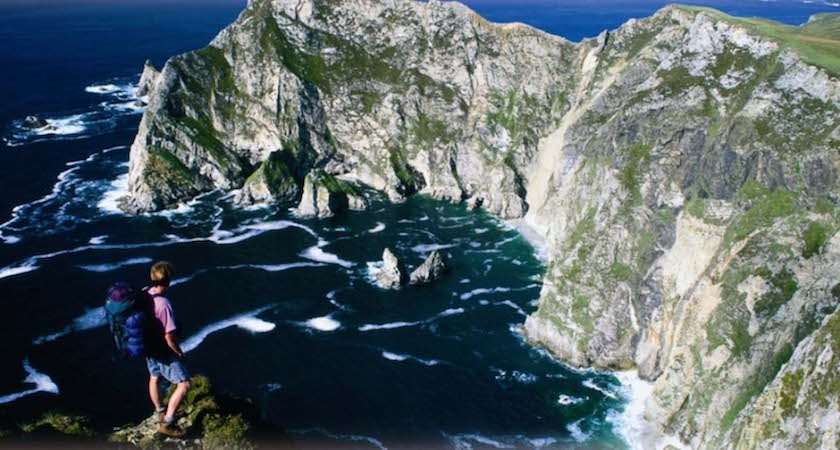THE Wild Atlantic Way is a 1,500-mile trail stretching from the Inishowen Peninsula, in Co. Donegal, to Kinsale, Co. Cork.
This is Ireland’s very own Route 66, its Great Ocean Road, its Highland Way.
Europe’s finest long-distance touring route stretches along the western seaboard, along a coast so gnarled and indented that even a Norwegian pining for his fjords will have his homesickness allayed.
With the intoxicating tang of sea-salt in the air, it takes in some of the country’s most spectacular coastal sights providing Discovery Points allowing the visitor to make the very best of the area.
Prosaically speaking the route passes through or skirts along the margins of nine counties and three provinces, stretching from Co. Donegal's Inishowen Peninsula to Kinsale in Co. Cork.
Scroll down for our list of 10 places to visit along the Wild Atlantic Way...
Along the route there are 157 Discovery Points, 1,000 attractions from culinary to cultural, and more than 2,500 activities from moonlit kayaking to coasteering.
But it’s more than that. This is an odyssey through Ireland’s history, its stories, and its heritage.
The route, which hugs a snarling coastline of raw beauty, passes great sea cliffs, pastel-painted villages, traditional music pubs, misty islands and ancient monasteries.
The Wild Atlantic Way also points you in the direction of major centres of excellence of merely hanging out. You may be certain there are many of these along the ways.
Secret discoveries on the Wild Atlantic Way...
1. Fanad Head, Donegal was voted the second most beautiful beach in the world recently. Mostly for the scenery not the balmy climate.
2. Ashford Castle is an essential stop along the Wild Atlantic Way. In the heart of Quiet Man country in Cong, this is one of the country's most majestic castles with dramatic views over Lough Corrib.Originally built over 700 years ago, much of what is now occupied dates back to Victorian times. Expect vaulted roofs, stone-flagged floors, and mediaeval armour all over the place. Oh, and the odd ghost. The castle is, of course, haunted.
3. The Cliffs of Moher are where the Old World plunges dramatically into the sea. The Great Wall of Thomond has a drop of some 700 feet into the Atlantic Ocean in dramatic. Star of postcards, adverts, videos and countless films, The Cliffs of Moher are incredible when it comes to cliff hangers. For the best views walk up to O'Brien's tower and look south. Some guide books record that “on a clear day you can see the Aran Islands". Listen. On a clear, if you stand on your tiptoes you’ll just about see Boston.
4. The isle of Valentia attracts visitors for myriad reasons – the views, the fishing, the hiking, the cable, the craic – plus one thing of major international significance: the tetrapods. The footprints of these primitive four-legged animals date back 385million years. These early Kerry inhabitants were ancestors of amphibians, reptiles, birds and mammals. You can find them on a trackway in the shadow of Jeokaun Mount.
5. Drumcliffe Cemetery is the last resting places of one of the English language’s greatest poets, William Butler Yeats. Even his name sounds like a piece of poetry. But the Sligo scenery is enough to wake the muse in anyone.
6. For a special overnight stop, try Broc House on the shores of Lough Gill.
7. Stories abound the whole length of the Wild Atlantic Way. Ross Castle on the edge of Lough Lein in Co. Kerry, was built in the late 1400s by the O’Donoghues. It was amongst the last to surrender to Oliver Cromwell. According to our old friend legend, once the Roundheads moved in, Chief O'Donoghue leaped out. The head of the clan, sensing that Cromwell’s men hadn’t popped in for afternoon tea, jumped out of a window at the top of the castle and disappeared into the waters of Lough Lein. He managed to take with him his horse, his furniture and his library. It is said that the Bould O'Donoghue now lives in a great palace at the bottom of the lake where he keeps a close eye on everything that he sees. There are occasional glimpses of him when he ventures onto dry land, so keep your eyes peeled.
8. To get to Dursey Island, lying at the southwestern tip of the Beara Peninsula, you need to take the cable car — Ireland’s only cable car, and the only one in Europe which crosses sea. Each cable-car takes six people – or one cow.
9. The small archipelago known as the Blasket Islands is renowned for its storytellers. The islands were vacated by the indigenous population in 1953. Today you can visit the Blasket Centre, hear the poignant story of the people. As the native author Tomás Ó Criomhthain said: “I have written minutely of much that we did, for it was my wish that somewhere there should be a memorial of it all, and I have done my best to set down the character of the people about me so that some record of us might live after us, for the like of us will never be again.”
10. The Beara Peninsula, with beaches remote enough for any aspiring Robinson Crusoe, juts out into the Atlantic, with its green valleys apparently sliding into the ocean. You can drive round the Peninsula, take a boat trip to see it from the sea, or hike the whole length of the Beara Way, some 138 kilometres long. Your reward, if you opt for this latter route, will be peace and tranquillity. As one local said: “Tranquillity? Sure, you have to wade through the stuff here."



